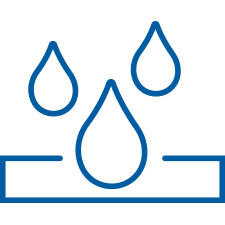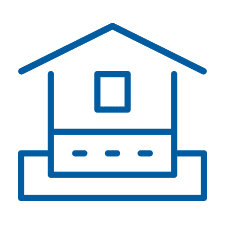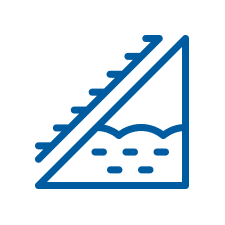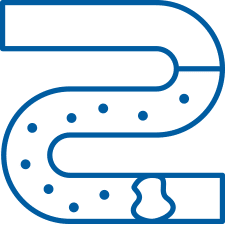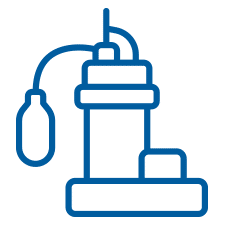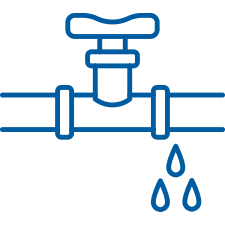Sewer Backup Problems in Chicago
Sewer backups or sewer overflows are a common problem faced by both home and business owners in the Chicago area. In older cities like Chicago, combined sewer systems and the management of area waterways play a significant role in sewer backup problems. Learn about what causes them and some solutions.
Effective water management strategies are crucial for preventing sewer backups in the Chicago area.
What is a Sewer Backup?
Sewer backups happen when wastewater or sewage flows back into buildings, including homes and businesses, through the plumbing system. This usually happens because the sewer lateral becomes overloaded or experiences a clog, causing the wastewater to reverse its flow and enter your home rather than flow away from it.
Sewer backups can have severe consequences for both properties and occupants. The wastewater that enters the building carries various contaminants, including bacteria, viruses, and other pathogens, posing health risks. Toilets and other plumbing fixtures are often affected during a sewer backup, leading to additional cleanup and repair needs. These conditions can make the area uninhabitable until the backup is resolved, and the area is properly cleaned and disinfected.
In addition to the health hazards, sewer backups can cause significant property damage. The contaminated water can ruin flooring, furniture, and personal belongings. It can also damage walls, electrical systems, and other structural components, leading to costly repairs.
If a sewer backup occurs, it’s crucial to prioritize safety and contact the professionals at Perma-Seal for assistance. Our team of professionals can inspect the sewer line for clogs or other damage using a sewer line camera, remove the wastewater, clean and disinfect the affected area, and repair any sewer clogs or damage to restore the property to a safe and habitable condition. If you’ve got a sewer problem, call Perma-Seal.
What Causes Sewer Backups?
Sewer backups are not typically caused by one specific issue. Knowing why your sewer may be backed up is important to make sure it doesn’t happen again. Sewer backups can be caused by a variety of issues, including:
- Heavy Rainfall or Flooding
- Sewer Main Line Clogs
- Clogged Interior Drain Lines
- Structural Issues
- Combined Sewer System Overflows
- Sewer Line Misconnections
What Are the Signs of a Sewer Backup?
Recognizing the signs of a sewer backup early on can help you act and prevent further damage. Here are some common signs that may indicate a sewer backup:
- Multiple Drain Clogs
- Gurgling Sounds
- Slow Drainage
- Drain Overflow
- Foul Odors
- Water Backup in Fixtures
- Soggy and Smelly Ground Around the Property
- Sewage in Basement or Lowest Plumbing Fixtures
Flooded streets are often a visible sign of sewer system overload during a major rain event, and residents should be especially alert for backups following such events.
If you notice any of these signs, addressing the issue quickly is crucial. Contact a professional at Perma-Seal to assess the situation, identify the cause of the backup, and take appropriate steps to resolve the problem and mitigate the damage. Avoid trying to fix the issue yourself. Fixing sewer backup requires specialized knowledge and equipment.
Health Risks and Consequences of Sewer Backups
Sewer backups are more than just a nuisance—they pose serious health risks to anyone in the affected area. When a sewage backup occurs in Chicago, IL, the wastewater that enters homes and businesses can carry harmful bacteria, viruses, and parasites. These contaminants can spread through contact with sewer water, contaminated surfaces, or even the air, increasing the risk of waterborne diseases such as cholera and typhoid fever. In addition, exposure to sewage can cause skin infections, respiratory issues, and other health problems, especially for vulnerable individuals.
The risk is heightened in cities like Chicago, where the combined sewer system can become overwhelmed during heavy rain events, leading to more frequent and severe sewer backups. City officials recognize the importance of maintaining the sewer system and have implemented measures such as inlet restrictor valves and downspout disconnection programs to help prevent sewer backups and protect public health. By keeping harmful bacteria and sewage out of homes and the environment, these strategies help reduce the spread of disease and keep the community safe. Homeowners are encouraged to stay informed about city initiatives and take proactive steps to prevent sewer backups in their own properties.
How Do You Fix Sewer Backups?
Fixing a sewer backup typically requires professional attention because of the complexity and potential health hazards involved.
Note: DIY drain unclogging solutions & floor drain plugs are not permanent solutions to sewer backup problems. Often, they do not work as well and can even cause damage to your main sewer line, which could increase the repair costs significantly.
Here are the general steps involved in addressing and resolving a sewer backup:
Safety First:
Prioritize safety by ensuring everyone on the property knows the issue and takes necessary precautions. Keep children and pets away from the area and avoid contact with sewage-contaminated water to prevent the spread of bacteria and other harmful pathogens.
Call a Professional:
Contact an expert from Perma-Seal who specializes in handling sewer backups and the specific sewer issues that face Chicago area home and business owners. We have the expertise, equipment, and protective gear to address the issue safely and effectively.
Assessment and Inspection:
Our professional will assess the extent of the backup, inspect the sewer system using a sewer line camera, and determine the cause of the problem. During this process, our sewer camera inspection will uncover any sewer clogs, root growth, or other sewer lateral damage that needs repair.
Sewer Clog Removal:
If a clog or sewer blockage causes the backup, one of our plumbers will work to remove it. They may use techniques such as hydro jetting, where high-pressure water clears the obstruction and cleans the pipes. Mechanical tools or rooter machines may be used for severe blockages or tree roots infiltrating the pipes.
Cleaning and Sanitization:
The affected area will require thorough cleaning and disinfection once the blockage is cleared. One of our professionals will use disinfectants and cleaning agents to sanitize the area, ensuring it’s safe for habitation.
Repairs and Restoration:
If the backup has caused any damage to the plumbing system or property, our plumbers will assess and repair any leaks, cracks, or structural issues in the sewer lines. This may require substantial sewer lateral repairs that need to take place outside of the home or business.
Preventative Measures For Sewer Backups
We offer preventative measures to ensure that sewer backups are prevented before they reach your home. Our patented double check valve system is designed specifically to address the needs of Chicago area homeowners. Ask our experts about having a sewer backup prevention system (AKA Sewer Overflow Prevention System) installed today.
In addition to our solutions, exterior sewer backup prevention systems—such as rain blockers and restrictor valves—are widely used to prevent flooding and reduce flooding in communities like Arlington Heights and Oak Park. Rain blockers, installed in stormwater catch basins, help control water flow during heavy rains and are an effective way to minimize sewer overloads. The Tunnel and Reservoir Plan (Deep Tunnel) is another major reservoir plan in the Chicago area, designed to manage stormwater and prevent flooding by storing excess water during storms.
It’s important to note that the specific steps and solutions for fixing a sewer backup can vary depending on each situation’s cause, severity, and unique circumstances. It’s crucial to consult with a qualified professional at Perma-Seal who can assess the specific issue and provide tailored solutions.
Contact Us to Fix Your Sewer Backup Problems in Chicago and NW Indiana
If you have any sewer problems, from clogs to completely collapsed sewer laterals, don’t hesitate to contact us and set up a meeting with one of our experts. Our team at Perma-Seal offers professional sewer backup prevention services for your home or business. Contact our experts today by calling 800-421-7325 or click the button below to fill out our online contact form.
